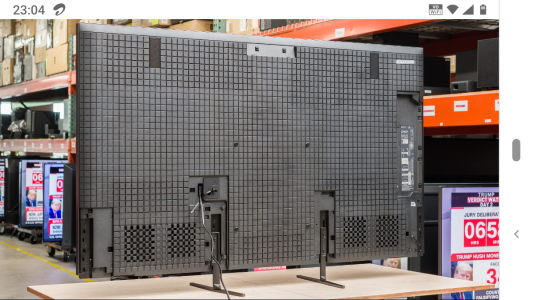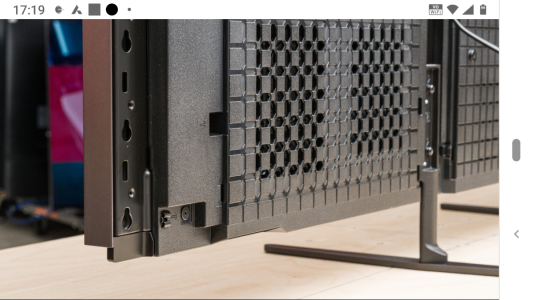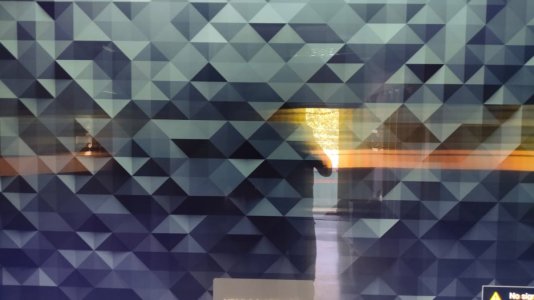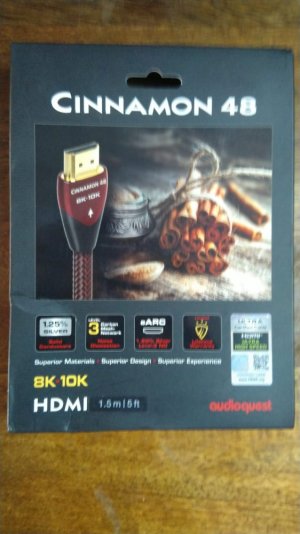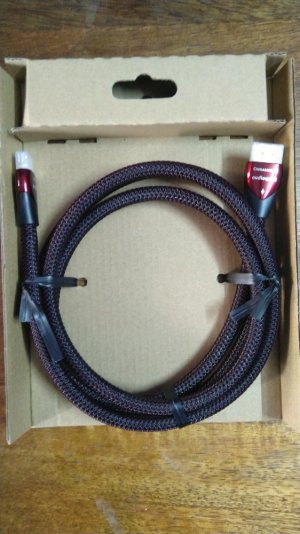Harish_Hyderabad_India
New Member
For over 25 years, I have remained loyal to the Sony brand, drawn to its unwavering commitment to superior product quality, reliability, long-lasting durability and minimal repair issues, particularly in the TV lineup.
I was excited to experience the Sony Bravia 9 TV; K-85XR90. While this TV excels in video/picture quality and capabilities. There are several areas that require paramount improvement.
Picture Quality: A Double-Edged Sword
The TV's picture quality is exceptional, but it comes with a caveat. To fully appreciate its capabilities, the TV must be placed in a closed, dark room. Any ambient light will cause reflections on the screen, reminiscent of a mirror. To address this, Sony should incorporate a 100% haze factor, similar to their professional display model BZ 53L/BZ 50L.
Audio Quality: A Missed Opportunity
Despite boasting multiple speakers with 70W output, the audio quality is average at best. The primary issue lies in the speaker placement – all speakers are placed in the back panel, back-firing, causing sound waves to bounce off the decorum cardboard/acoustic panel, resulting in a dry, dull and low-quality sound output. The sound settings are also confusing and not user-friendly, catering more to traditional users who prefer low, quiet sound effects rather than those seeking a cinematic experience.
The Immersive Audio Paradox: Separating Reality from Hype
Despite the proliferation of advanced speaker technologies, such as surround firing, beam firing, and object-based audio, the promise of cinematic, immersive sound remains elusive. In reality, even with genuine Dolby Atmos and DTS: X content, the immersive sound experience falls short of expectations. Poor dialogue intelligibility in action scenes and low-pitch vocals, hard to hear, understand, follow, no matter you tweak in all sound settings like voice zoom, dialogue enhancer, equalizer, etc… In essence, the immersive audio experience often devolves into a familiar old-school stereophonic effect-a far cry from the stated cinematic experience-“ Cinema is Coming Home “!
Calibration Mode
Netflix and Prime Video's Calibration Modes are touted as unique selling points, offering users a personalized viewing experience. However, our experiences suggest that these calibration modes are not foolproof and require manual fine-tuning to achieve optimal results. Hence, room for improvement exists in calibration mode algorithms and user interface.
Connectivity Limitations
The TV's connectivity options are limited, with only two HDMI ports supporting 2.1. Furthermore, the Ethernet connectivity speed is capped at 100 Mbps, a significant drawback.
Conclusion:
At its premium price point, the Sony Bravia K-85XR90 falls short in several areas. To make it a game-changer, Sony must address these shortcomings:
Improve screen reflectivity with a 100% haze factor
Redesign speaker placement for better sound quality
Simplify sound settings for a more user-friendly experience
Increase HDMI ports with 2.1 supports
Upgrade Ethernet connectivity speed
By implementing these changes, Sony can create a truly exceptional TV that justifies its premium price.
I was excited to experience the Sony Bravia 9 TV; K-85XR90. While this TV excels in video/picture quality and capabilities. There are several areas that require paramount improvement.
Picture Quality: A Double-Edged Sword
The TV's picture quality is exceptional, but it comes with a caveat. To fully appreciate its capabilities, the TV must be placed in a closed, dark room. Any ambient light will cause reflections on the screen, reminiscent of a mirror. To address this, Sony should incorporate a 100% haze factor, similar to their professional display model BZ 53L/BZ 50L.
Audio Quality: A Missed Opportunity
Despite boasting multiple speakers with 70W output, the audio quality is average at best. The primary issue lies in the speaker placement – all speakers are placed in the back panel, back-firing, causing sound waves to bounce off the decorum cardboard/acoustic panel, resulting in a dry, dull and low-quality sound output. The sound settings are also confusing and not user-friendly, catering more to traditional users who prefer low, quiet sound effects rather than those seeking a cinematic experience.
The Immersive Audio Paradox: Separating Reality from Hype
Despite the proliferation of advanced speaker technologies, such as surround firing, beam firing, and object-based audio, the promise of cinematic, immersive sound remains elusive. In reality, even with genuine Dolby Atmos and DTS: X content, the immersive sound experience falls short of expectations. Poor dialogue intelligibility in action scenes and low-pitch vocals, hard to hear, understand, follow, no matter you tweak in all sound settings like voice zoom, dialogue enhancer, equalizer, etc… In essence, the immersive audio experience often devolves into a familiar old-school stereophonic effect-a far cry from the stated cinematic experience-“ Cinema is Coming Home “!
Calibration Mode
Netflix and Prime Video's Calibration Modes are touted as unique selling points, offering users a personalized viewing experience. However, our experiences suggest that these calibration modes are not foolproof and require manual fine-tuning to achieve optimal results. Hence, room for improvement exists in calibration mode algorithms and user interface.
Connectivity Limitations
The TV's connectivity options are limited, with only two HDMI ports supporting 2.1. Furthermore, the Ethernet connectivity speed is capped at 100 Mbps, a significant drawback.
Conclusion:
At its premium price point, the Sony Bravia K-85XR90 falls short in several areas. To make it a game-changer, Sony must address these shortcomings:
Improve screen reflectivity with a 100% haze factor
Redesign speaker placement for better sound quality
Simplify sound settings for a more user-friendly experience
Increase HDMI ports with 2.1 supports
Upgrade Ethernet connectivity speed
By implementing these changes, Sony can create a truly exceptional TV that justifies its premium price.


